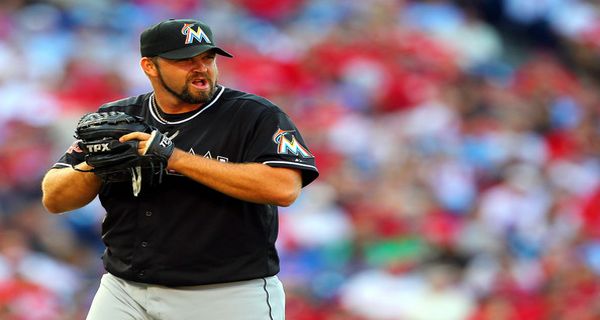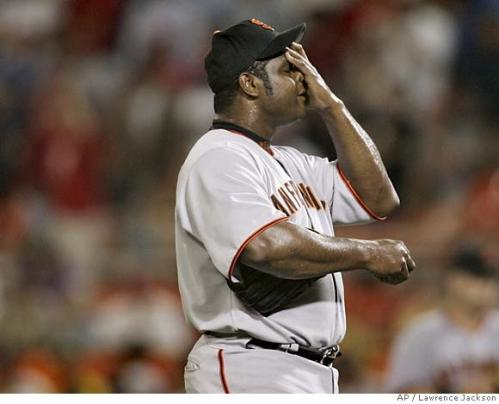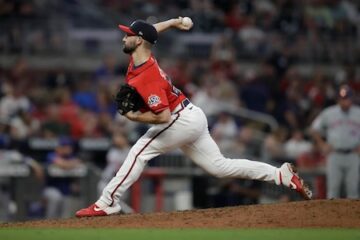Do Blown Saves Tell us anything for Fantasy Baseball?


To try and ascertain whether blown saves have a negative impact on saves and/or value, I pulled every relief season since 2009 and sliced and diced the data, mostly sorting by quantity of blown saves and looking at how relievers performed after blowing a lot of saves.
The short of what I found is that, at least recently, blown saves don’t tell us much about the future value of a given reliever. One reason for this is, perhaps, poor relievers aren’t given an opportunity to accumulate many blown saves and get a hook quite quickly and are easily replaced, so they don’t appear in (large-ish) samples.
Still, there are some nuggets of value:
- If a closer makes it to the All-star break with the job and few blown saves (5 or less), he’s likely to maintain the job.
- If a reliever blows 6 or more saves in the first half, his innings and opportunities will decrease in the second half.
- If a closer blows a large amount of saves (10 or more) he might be injured or replaced quickly the following season (not shocking, obviously).
- Total blown saves during a season have little determinant on overall fantasy value, aside from cutting down the amount of saves/holds.
It follows that the All-star break is the time to acquire closers with few blown saves on their sheet. Apparently, they have accumulated enough good will with managers to maintain the job and be relatively safe regardless of what happens in the second half.
Blown Saves and the Following Season
From 2009-2011, there are 30 seasons during which a reliever blew seven or more games (actually there are 31, but Billy Wagner retired, so he doesn’t help here).
Five RPs blew 10 or more games: Brad Lidge and Mark Lowe in 2009, Tyler Clippard in 2010 and Jordan Walden and Carlos Marmol in 2011. Clippard and Lowe were not true closers, but it is worth noting that Lowe tallied just 13.1 innings the following season. Clippard was his usual dominant self, but didn’t accumulate any saves.
Lidge was average the season following his 11 blown save debacle, but still tallied 27 saves. He pitched just 45.2 innings, blew five saves, but did have a 2.96 ERA and 3.87 FIP.
Walden lost closing duties quite quickly in 2012 following his 10 blown save debut in 2011. He pitched just 39 innings but wasn’t horrible (3.46 ERA and 3.02 FIP) – still he was shipped out in the off-season.
Marmol saved 20 games following his 10 blown save season. While he battled injuries and wildness, he did end up with a 3.42 ERA and 3.98 FIP.
Of the leaders in blown saves recently, only two of the five managed to top 50 innings the following year. That said, two of the three closers managed to reach 20 saves.
Another seven relievers posted eight or nine blown saves in a season between 2009-2011. This group faired a bit better the following season, with four relievers saving 31+ games. Of the others, J.P. Howell was injured and lost his entire follow-up season, Matt Capps was mostly ineffective/injured and Aaron Heilman wasn’t given the ball much (35.1 innings). Of the true closers, it doesn’t really appear that they lost a ton of saves the following year. There does seem to be a slight relationship between blown saves as a middle reliever and decreased usage the following season though.
There were 18 seasons between 2009-2011 during which a reliever blew seven games. Six of these relievers followed up with 24+ save seasons. Of those, Brian Fuentes basically lost the job due to ineffectiveness, but did accumulate 24 saves in 28 innings, so there was value. Francisco Rodriguez was injured but still got 25 saves. Jonathan Broxton, Kevin Gregg and Fernando Rodney sort of lost closing duties the following season. With Broxton, though, it was health, while the other two just weren’t very good.
It doesn’t appear that blown saves really have an overwhelming impact on the following year. In fact, the seasons after blowing at least seven games average 14.2 saves. If you take out the injured players, that number jumps to 15.2. If you take out the middle relievers, you get an average of 21.8 saves per season. Certainly, you should downgrade closers who blow a ton of saves in the previous year, but these relievers do tend to lead their teams the following season in saves.
If you’re looking at blown saves from a previous year as any sort of indication, you should probably abandon that logic, unless the reliever has blown a lot of games.
Blown Saves and the Current Season
There have been 15 instances of a relief pitcher blowing at least eight saves during one season since 2009. In over half of those seasons (eight), the pitcher tallied at least 30 saves. In fact, this group averaged 24 saves, even with Clippard and Aaron Heilman producing seven saves between them.
Since 2009, there have been 26 relief seasons with exactly seven blown saves. Six of these featured 30 save efforts with another three topped 25 saves. This group averaged nearly 17 saves, but 10 relievers posted three or less. If you remove these clear non-closers, this group averaged 26.7 saves a season
Thirty-six times since 2009 a relief pitcher finished a season with six blown saves, eight of these seasons featured 30+ save efforts and another five RPs produced 24+ saves. With everyone included, this group averaged 16 saves; removing clear non-closers pushes the average to 27.2 saves a season.
There have been 42 RP seasons with five blown saves; 15 of these featured 30+ save efforts with an additional four RPs besting 24 saves. Collectively, this group averaged 18.6 saves. After removing the clear non-closer, the average rises to 33.
Clearly less blown saves mean more saves – although that could be just because the closers aren’t wasting their opportunities not that they are staying in the job more, i.e. if you get 40 save opportunities and blow five instead of seven, you’ll get more saves.
Relievers with at least 5 First Half Blown Saves and their Second Halves
The players with at least five blown saves in the first half averaged 11 saves in the first half. In the second half, this group averaged just 6.9 saves. Still, that does get you close to a 20 save season (which would lead most teams). In the first half, these players averaged 38.4 innings, in the second half they averaged just 28 innings.
Since 2009, in the first half, there were 11 relievers who managed at least 15 saves while also blowing at least five opportunities. In the second half, only five of these relievers managed at least 15 saves, with an additional three managing 10-13.
It’s worth noting that their blown saves and actual saves dropped after the first half. Part of this is likely randomness, but part of it has to be a lack of opportunities, as managers moved their blown save savants to lower leverage roles.
Relievers with at least 6 First Half Blown Saves and their Second Halves
In the first half, these nine guys averaged 12.4 saves. In the second half they averaged 5.4 saves. Innings also went down, from 39.6 to 29.8. Of the closers in the group, Brandon League went from 9 to 6 saves, Carlos Marmol went from 19 to 15 saves, Francisco Cordero went from 24 to 16 saves, Heath Bell went from 19 to 0 saves, Jordan Walden went from 20 to 12 saves and Matt Capps went from 15 to 0 saves. Still, for the most part, they lead their teams in saves. However, there was certainly some attrition (perhaps they just weren’t getting the save opportunities) because every single reliever decreased in saves, while actually accumulating less blown saves.
Is six first half blown saves a magic number? If we look at the closers who blew just five games in the first half: Craig Kimbrel decreased from 28 to 18 saves, Francisco Cordero increased from 17 to 20 saves, Joakim Soria decreased from 15 to 13 saves, John Axford increased from 15 to 20 saves, Juan Oviedo decreased from 20 to 10 saves, and Octavio Dotel decreased from 19 to 3 saves – Trevor Hoffman pulled 5 saves in the first and second halves, but that was mostly in a record breaking effort. The guys who blew five saves in the first half tend to be fine come the second half, whereas the relievers who blow six saves see a decrease in opportunities in the second half.
Do blown saves really matter?
Sort of. However, they have a short shelf life. There also appear to be fewer blown saves in the second half (since 2010, there have been just four seasons with five or more blown saves in the second half versus 21 in the first half). At least partly, this has to have something to do with the variance of relievers. Certainly relievers tend to range from terrible to awesome from year to year and it probably takes a manager half a season to figure out who the best relievers on his team are.
In short, it’s rather useless to look at blown saves from the year before in determining job security in the following season. Further, a full season of blown saves doesn’t show anything really interesting. Logically, though, it does make some sense that a lot of blown saves earlier in the season put a closer’s job in jeopardy. At the least, blown saves early in the season tend to limit innings and save opportunities in the second half.





